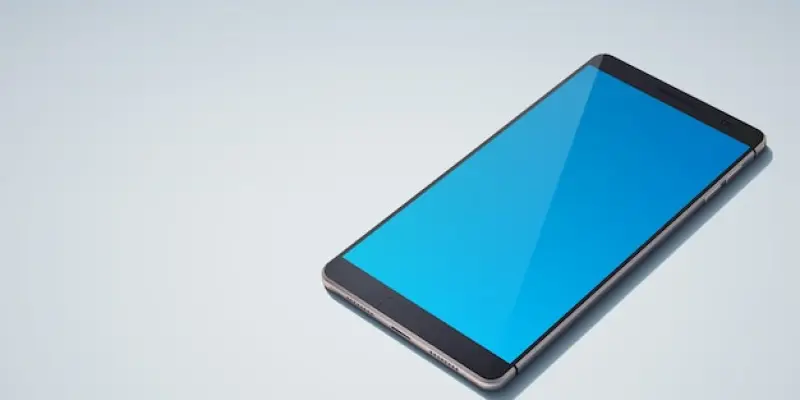In the constantly evolving world of mobile technology, anticipation for Android 16 has reached a fever pitch. With each new version, users eagerly await the changes and improvements that will shape their smartphone experiences. This time around, leaked screenshots have hinted at a major overhaul, emphasizing personalization and visual refinement. The impending launch promises to bring about a series of design modifications that could set a new standard for user interfaces. Android 16 is not just about aesthetic updates; it’s a testament to Google’s ongoing commitment to creating a more personalized and user-friendly platform. This article delves into the anticipated features and design changes that could potentially redefine how users engage with their smartphones.
Enhanced Personalization and Aesthetic Revamp
Customization Takes Center Stage
One of the most notable aspects expected with Android 16 is its focus on providing users with a higher degree of customization. With adjustable app icon shapes being at the forefront of this update, users can choose from a variety of shapes, including rectangular and round options. This feature enables individuals to tailor their home screen layout to better match personal preferences, enhancing the sense of ownership and uniqueness of their devices. The ability to personalize the appearance of icons represents a significant shift towards providing users greater flexibility and control over how their screens look.
Furthermore, Android 16 aims to introduce a more dynamic and visually appealing interface within the system settings app. A splash of color and clearly separated sections will likely make navigating options easier and more intuitive. Redesigned sliders are part of this visual transition, ensuring that the aesthetic appeal does not come at the cost of practical usability. Such changes suggest that Google is focusing heavily on the visual elements that often contribute to a seamless user experience.
Transformative Interface Adjustments
Beyond app icons and settings, the overall interface improvements continue with changes to the volume slider and lock screen layout. Adjustments in how information, like time and date, are presented become apparent on the updated lock screen, introducing an element of sleekness that enhances the overall user experience. The passcode entry screen will reportedly now feature a blurred wallpaper background, which not only boosts security but also adds a modern touch to everyday tasks. These modifications are expected to be first visible on Google’s Pixel devices, particularly as part of the Pixel 9 Pro’s custom launcher. While the interface transformation has been visible through the beta versions, it is still uncertain whether these changes will remain exclusive to Google’s hardware. The upcoming final release, projected for June, might still hold further refinements. Yet, the emerging trends strongly indicate a move towards more accessible and aesthetically pleasing interfaces, showing Google’s intention to prioritize both functionality and style.
Google I/O and the Broader Implications
A New Direction in Design Philosophy
Google’s anticipated unveiling of Android 16 during the forthcoming Google I/O event underscores the company’s dedication to continuous innovation in the mobile OS space. This version’s release marks a pivotal moment where emphasis on aesthetic enhancements might influence other aspects of mobile user experience design. These changes appear to be part of a broader effort to make Android more intuitive and attractive to the end user, aligning with modern expectations for technology integration in daily life.
Moreover, Google’s strategy to deliver more vibrant and distinct visual experiences suggests a recognition of the significant role that design plays in how users interact with technology. By focusing on creating a visually engaging platform, Google is attempting to redefine what it means for a mobile interface to be user-centric. As the tech giant exposes these advancements at a prominent industry event, it could also spark conversations about interface standardization and design expectations.
Anticipation and Industry Reactions
The impact of Android 16 on the broader tech industry could be substantial, as other manufacturers and developers may look to emulate its successful aspects. If these anticipated design changes find favor with users, it could lead to a wave of similar updates across different platforms, aiming to enhance mobile personalization. This potential ripple effect emphasizes the gravity of such updates in the competitive digital landscape.
As Android 16 prepares for its official introduction, stakeholders across the industry will be closely observing consumer reactions and feedback. The changes will likely serve as a benchmark for future developments in mobile operating systems, illustrating the importance of adapting to ever-evolving user preferences. How well Android 16’s advancements are received could dictate the trajectory of mobile UI design for the foreseeable future, marking a period of significant transformation in the field.
Navigating the Future of Mobile Personalization
In the fast-paced realm of mobile technology, anticipation for Android 16 is at an all-time high. Every new Android release brings a sense of excitement as users look forward to enhancements that will elevate their smartphone experiences. Rumors and leaked screenshots suggest that Android 16 will focus on personalization and visual elegance, setting the stage for a potential revolution in user interfaces. It seems that this version is set to raise the bar with a series of innovative design updates. However, the changes in Android 16 go beyond just visuals— this release underscores Google’s dedication to crafting a more personalized and intuitive platform for users. As we delve into the projected features and design shifts, it’s evident that Android 16 could significantly change the way users interact with their devices. This update points to a promising future where smartphones become more aligned with individual user preferences and needs, paving the way for a user experience tailored to personal tastes and expectations.

